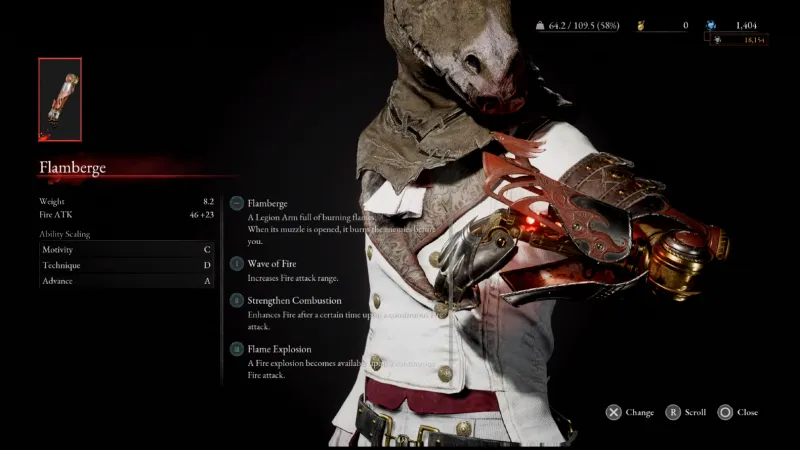Lies of P developer Neowiz proudly calls its The Adventures of Pinocchio-inspired action game a Soulslike, drawing direct attention to its From Software inspiration. The proclamation is a bold and risky move. While there are great contenders in this action subgenre, even the best are a few marks from what From Software creates and I went into Lies of P with that expectation. But then I put 40 hours into Lies of P in just five days, something I rarely do with any game. And then I doubled back on a save to get a different ending. And then I started New Game Plus because I wanted more. Lies of P masterfully wields familiar Soulslike combat and worldbuilding and infuses it with a few twists to set it apart from its various inspirations. The result is a pondering and memorable exploration of a fairytale everyone knows built within a deeply rewarding action game. Simply put, Lies of P is utterly fantastic.

Neowiz commits hard to Pinnochio – while I laughed the first few times Lies of P reminded me I was controlling Pinnochio, the game never joined in on that. And after the first 10 hours, I stopped laughing too. Not because it wasn’t funny anymore – it was and still is – but because I realized Neowiz looked beyond Pinocchio as shock value for a character. It uses a puppet we’re all familiar with to tell a story of an overworked, undervalued class rising against its creators, how far those creators will go to remain in power, and, as you might expect, what it means to be a human (and there’s a confusing but interesting mechanic to go with that I won’t spoil here). It’s not necessarily new ground, nor is it necessarily all that deep, but spinning the tale of Pinnochio into everything Lies of P encompasses is commendable, and it works, especially within the confines of a Soulslike.
Combat is familiar to those who know the genre Lies of P declares itself to be part of. Every enemy has the potential to kill you with a few missteps, bosses surprise and enrage you, providing essential skill checks during your journey through 19th Century France-inspired Krat, and mechanics won’t make sense… until they do. Anyone familiar with Soulslikes knows what’s going on here, but after Lies of P introduces its various parts, the whole becomes realized.
Pinnochio’s mechanical Legion arm can add fire, electricity, acid, easy blocking, a grapple line, and more to your arsenal, opening up the potential to discover enemy weaknesses. Grindstones further this, allowing you to imbue your weapon with an element, and one-time-use Wishstones can completely turn the tide of a battle, whether that be by prolonging the life of your helpful NPC specter against a boss or slowly regenerating your HP when you’re out of Pulse Cells to restore yourself. Even weapons can be broken apart into a handle and a blade to mix and match, and every weapon is capable of special Fable Arts moves to flashy effect. I loved the pace at which Neowiz introduced these mechanics as it deepened what I could do in combat at just the right moments, when I thought I was done learning.

Save for a few areas, Lies of P is gorgeous and unique, brimming with the energy of industry in the puppet-infested Krat, its surrounding regions, and the Krat Hotel hub that serves as the base of operations, filled with NPCs, shopkeeps, a mysterious girl responsible for leveling Pinnochio up, and more. The expected highlights are there too: a once beautiful city ravaged by plague, a gothic cathedral home to horrors, a World Fair-esque exhibition, and more, all connected through revelatory shortcuts. Seeing these Soulslike mainstays through the eyes of Pinnochio and Neowiz is invigorating; I was excited to reach the “poison swamp” of Lies of P, a locale present in just about every Souls game and the games inspired by them. It helps that Lies of P runs exceptionally well and looks stunning while doing it. My PlayStation 5 captures folder is full of screenshots from this game.
How Is Lies Of P On Steam Deck?
Predictably, Steam Deck is not the best way to play Lies of P, but it runs impressively well on Valve’s handheld. The important part of the game, its performance, is prioritized so even though there are instances where various textures in the distance pop in and out, it doesn’t affect the gameplay. You might be distracted by a visual hiccup in the distance during a difficult boss fight, but the framerate is consistent, which means you still should be able to hit that perfect dodge without worrying about the game keeping up. Using Steam’s cloud save options, I have been seamlessly jumping between the Steam Deck and desktop version with little issue. – Kyle Hilliard
Even when Soulslikes excel at creating an exciting world and great-feeling combat, it’s often the bosses where the seams show, but that’s not the case in Lies of P. Bosses are good fun and relatively easy, like much of the game, but there are few extremely difficult ones that took me upwards of two dozen attempts to take down. Most are highly memorable both in design and how they were seemingly in my head, calling my moves before I even pressed a button. The final boss is an excellent skill check of everything learned in the prior 40 hours, and another stands out as a new Souslike favorite, asking me to master Lies of P’s “perfect guard” mechanic to counter swift explosions of five to 10 hits at a time.
Like the best action games, Lies of P rewards you each time you veer off the main path and for subsequent combat encounters. Defeating bosses, even most optional minibosses, rewards Quartz, used to give Pinnochio game-changing upgrades like an additional dodge and stronger Pulse Cell charges. Hordes of enemies block special chests with new costumes and special items, and even the most basic of puppets and monsters reward you with something useful, be it good ole experience for leveling up or a consumable or throwable item you’ll be thankful for against specific bosses.
Lies of P’s greatest strength is how it rewards and empowers you at every turn to venture further through this twisted tale of puppetry and monstrous humanity, despite its oppressive world and formidable enemies. I struggled to pull myself away from Lies of P, even when it had me fuming. It delicately balances the fun of a Soulslike with the challenge the genre demands and only falters a few times. That it maintains that balance within the confines of a fairytale most know best because of Disney, flipping it on its head to tell something more in line with Carlo Collodi’s original The Adventures of Pinnochio, is another achievement of Lies of P. But above all that, Lies of P uses the familiar, the highlights, and the lessons learned from the authors of the Soulslike subgenre to create something unique, fascinating, and exhilarating. Neowiz aimed for the stars, much like the ones its Pinnochio wishes upon, and hits them with machine-like accuracy.



